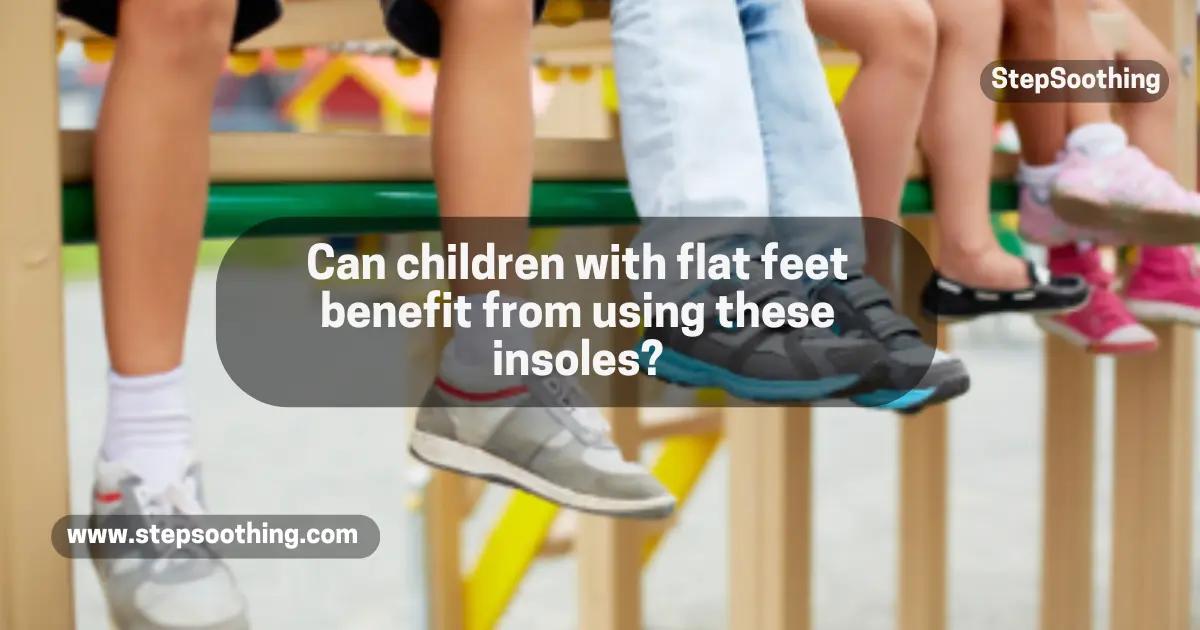Flat feet in children are a common concern for parents, often leading to questions about proper foot development, mobility, and long-term health. While many children naturally outgrow flat feet as their arches develop, some may experience pain, fatigue, or difficulty with balance and posture. Left unaddressed, improper foot mechanics can contribute to overpronation, knee misalignment, and even lower back pain over time.
Experts in podiatry and pediatric orthopedics often recommend orthotic inserts to provide arch support, improve foot alignment, and enhance overall comfort. However, not all children with flat feet require insoles—determining whether they are necessary depends on symptoms, activity levels, and individual biomechanics.
This guide explores the role of orthotics in managing flat feet in children, the best options available, and expert-backed advice to support healthy foot development.
Flat Feet Support for Kids – Improve Posture & Comfort
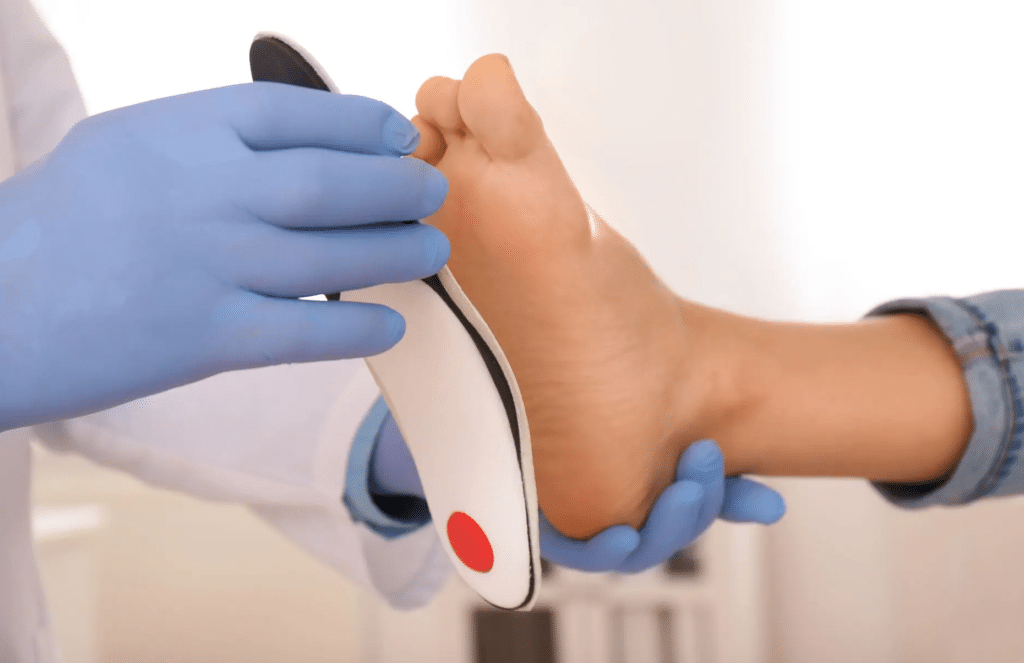
Understanding Flat Feet in Children
What Are Flat Feet?
Flat feet, also known as pes planus, occur when the arches in the foot do not develop properly, causing the entire sole to make contact with the ground. According to the American Academy of Pediatrics (AAP), most children are born with flat feet, and their arches naturally form between ages 6 and 10 (Staheli, 1999). However, in some cases, the arches may never fully develop, leading to potential discomfort and biomechanical issues.
For children experiencing persistent discomfort, understanding the causes, remedies, and prevention of foot pain can help determine the best course of action.
Types of Flat Feet in Children
- Flexible Flat Feet – The arch appears when the child is sitting or on tiptoes but flattens when weight is applied. This type is typically not problematic and often resolves with age.
- Rigid Flat Feet – The arch is absent even when the child is not bearing weight, which may indicate structural abnormalities such as tarsal coalition or neurological conditions. This type may require medical intervention (Mosca, 2010).
Does a Child Need Insoles for Flat Feet?
Flat feet in children are usually not a cause for concern unless symptoms develop. According to the American Orthopaedic Foot & Ankle Society (AOFAS), insoles may be necessary if a child experiences:
- Foot pain, fatigue, or discomfort during daily activities.
- Gait abnormalities, such as excessive inward rolling of the ankles (overpronation).
- Knee, hip, or lower back pain related to poor foot alignment.
- Persistent flat feet beyond age 10, especially if accompanied by pain.
For children who require additional foot support, arch support insoles designed for flat feet can help improve alignment and comfort.
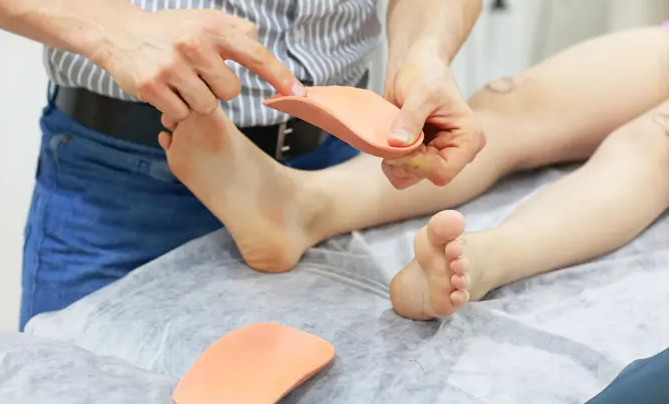
Are Insoles Effective for Kids with Flat Feet?
How Do Insoles Work?
Podiatric research suggests that orthotic insoles and shoe inserts can provide several benefits for children with symptomatic flat feet (Evans & Rome, 2011):
✅ Arch support to redistribute pressure and reduce foot fatigue.
✅ Shock absorption to minimize stress on joints and ligaments.
✅ Improved alignment to correct excessive pronation and improve posture.
✅ Injury prevention, particularly in active children who engage in sports.
Should Children Wear Arch Support?
Not all children require orthotic arch support. The decision should be based on the child’s symptoms, activity level, and overall foot structure. According to a study published in the Journal of the American Podiatric Medical Association (JAPMA), orthotic intervention is most beneficial for children experiencing pain, gait instability, or excessive foot pronation (Whitford & Esterman, 2007).
Do Insoles Permanently Fix Flat Feet?
Insoles do not permanently correct flat feet, as foot structure is largely determined by genetics and biomechanics. However, they can alleviate symptoms, improve function, and prevent secondary complications such as knee and hip misalignment (Dahle et al., 2019).
Choosing the Best Insoles for Children with Flat Feet
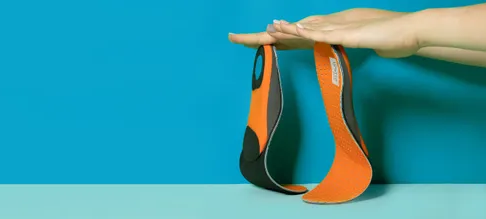
Soft vs. Rigid Insoles: Which is Better?
Podiatrists classify insoles based on their material composition and level of support:
- Soft cushioned insoles – Provide comfort and shock absorption but offer minimal structural correction. Best for mild flat feet with occasional discomfort.
- Semi-rigid or rigid orthotic insoles – Designed to offer biomechanical correction and motion control, making them ideal for moderate to severe cases or children with pronation-related pain.
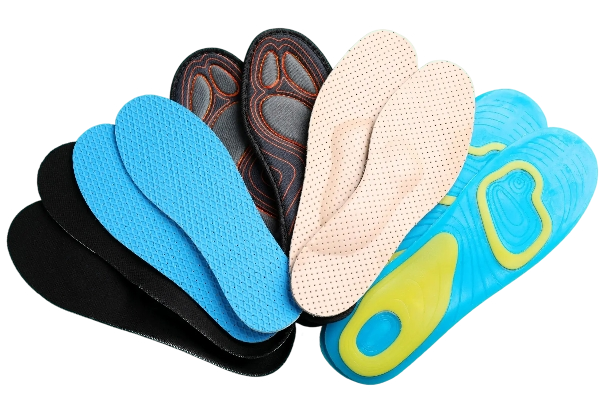
Custom Orthotics vs. Over-the-Counter Insoles
- Custom orthotics – Created by a podiatrist based on a detailed foot assessment. Recommended for severe flat feet, structural abnormalities, or chronic pain but can be expensive.
- Over-the-counter (OTC) insoles – Pre-made insoles that provide general arch support. Suitable for mild to moderate cases and more affordable.
Best Insoles for Children with Sever’s Disease
Sever’s disease (calcaneal apophysitis) is a common heel pain condition affecting children aged 8–14, particularly those involved in sports. The American College of Foot and Ankle Surgeons (ACFAS) recommends insoles with:
✅ Deep heel cups to stabilize the foot.
✅ Heel padding to absorb shock and reduce strain.
✅ Firm arch support to prevent excessive stretching of the heel’s growth plate.
Top-rated insoles for Sever’s disease include:
- Tuli’s Cheetah Heel Cups – Specifically designed for young athletes.
- Superfeet Green Insoles – Offer structured arch support and shock absorption.
- Heel That Pain Insoles – Focus on alleviating heel stress and discomfort.
Alternatives and Additional Support for Flat Feet
Strengthening Exercises for Foot Health
Studies indicate that foot-strengthening exercises can improve arch stability and reduce pain in children with flat feet (Jung et al., 2016). Recommended exercises include:
- Toe curls – Picking up small objects with the toes.
- Calf raises – Strengthening the posterior tibial muscle, essential for arch support.
- Rolling a tennis ball under the foot – Enhancing flexibility and reducing tension.
Choosing the Right Footwear
Proper shoes should have:
✔ Firm heel counters to provide rearfoot stability.
✔ Arch support and cushioned midsoles.
✔ Flexible forefoot design to allow natural movement.
Physical Therapy for Severe Cases
If symptoms persist, physical therapy may be recommended to improve foot posture, muscle activation, and gait mechanics.
Addressing Common Myths About Insoles
Do Insoles Weaken Foot Muscles?
There is no evidence to suggest that properly designed orthotic insoles weaken foot muscles. In fact, research suggests that they can enhance muscle function by providing biomechanical support (Morrison et al., 2020).
Does Every Child with Flat Feet Need Insoles?
No. Asymptomatic flat feet typically do not require treatment. Insoles are primarily beneficial for children with pain, functional impairments, or abnormal gait patterns.
Can Insoles Permanently Fix Flat Feet?
No, but they can prevent complications, improve comfort, and enhance mobility. Structural changes in the foot depend on natural growth, genetics, and muscle development.
Conclusion: Should a Child with Flat Feet Wear Insoles?
Pediatric foot specialists and orthopedic experts agree that insoles can be beneficial for children experiencing pain, fatigue, or gait abnormalities due to flat feet. While not a permanent cure, they provide structural support, shock absorption, and injury prevention.
Key Takeaways:
✅ Insoles help with pain relief and posture correction.
✅ Not all flat-footed children require arch support.
✅ Strengthening exercises and proper footwear play an essential role.
✅ Medical evaluation is recommended for persistent pain or abnormal gait patterns.
For children experiencing ongoing discomfort, consulting a pediatric podiatrist can ensure proper diagnosis and treatment.
People Also Asked about Flat feet support for kids
At what age should parents be concerned about flat feet in children?
Most children naturally have flat feet until around age 6, as their arches are still developing. If flat feet persist beyond age 10 and cause pain, gait abnormalities, or mobility issues, a podiatrist should evaluate the condition.
Do insoles help correct flat feet permanently?
No, insoles do not permanently fix flat feet. They help with pain relief, arch support, and proper foot alignment, but they do not alter the foot’s natural structure. Some children may develop arches over time, while others may always have flat feet without major issues.
Can wearing insoles weaken a child’s foot muscles?
No, properly designed orthotic insoles do not weaken foot muscles. Instead, they support natural movement, reduce strain, and improve foot function. However, combining insoles with foot-strengthening exercises can enhance muscle activation.
Should all flat-footed children wear arch support insoles?
Not necessarily. If a child has no pain or mobility issues, they may not need insoles. However, for those experiencing foot fatigue, discomfort, or overpronation-related issues, arch support can improve comfort and posture.
References
- Dahle, L. K., et al. (2019). “The Effect of Foot Orthotics on Lower Limb Alignment in Children.” Journal of Pediatric Orthopedics.
- Evans, A. M., & Rome, K. (2011). “A Review of the Evidence for Pediatric Flatfoot and Orthotic Use.” Journal of Foot and Ankle Research.
- Mosca, V. S. (2010). Principles of Pediatric Orthopedics.
- Whitford, D., & Esterman, A. (2007). “A Study on the Effects of Foot Orthoses in Children.” JAPMA.
